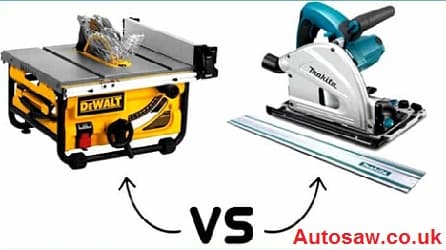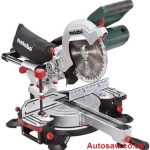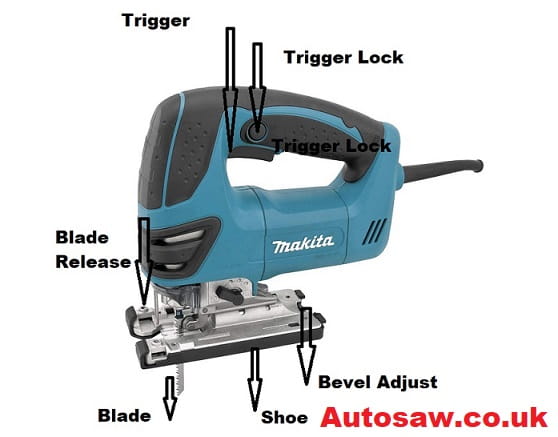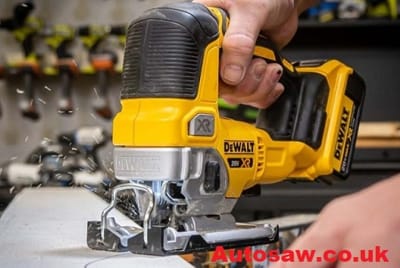As an Amazon Associate, I earn from qualifying purchases.

Woodworking requires precision and accuracy to create beautiful and functional pieces. When it comes to cutting wood, two popular tools that craftsmen often debate about are the table saw and the track saw. Each tool has its own unique features and benefits, catering to different woodworking needs. In this article, we will explore the differences between table saws and track saws, their advantages and disadvantages, and help you make an informed decision on which tool to choose for your woodworking projects.
Contents
Table Saws
Overview And Functionality
Table saws are stationary tools with a circular blade mounted on an arbor, protruding through a flat surface. They excel at making long, straight cuts and are commonly used for ripping boards or crosscutting large panels. Table saws offer adjustable fences and miter gauges for accurate and repetitive cuts. They are powered by electric motors, providing consistent cutting power.
Pros And Cons Of Table Saws

Table saws offer several advantages, including:
- Excellent for long, straight cuts and repetitive tasks.
- Ideal for cutting large sheets of plywood or MDF.
- Allow for easy creation of various joinery techniques.
- Provide stability and precision with adjustable fences and miter gauges.
However, table saws also have some limitations:
- Lack of portability due to their large size and weight.
- Safety concerns associated with exposed blades.
- Limited flexibility for curved or irregular cuts.
- Higher learning curve for beginners.
Track Saws
Overview And Functionality
Track saws, also known as plunge saws, consist of a circular blade attached to a guide rail. This rail acts as a guide, ensuring straight and precise cuts. Track saws are highly portable and excel at making accurate rip cuts, crosscuts, and bevel cuts. They are designed to provide the benefits of a table saw in a more portable and compact form.
Pros And Cons Of Track Saws

Track saws offer several advantages, including:
- Portability and ease of transportation.
- Versatility for both straight and bevel cuts.
- Safer operation with enclosed blades.
- Suitable for working with large or heavy panels.
However, track saws also have some limitations:
- Limited cutting capacity compared to table saws.
- Higher cost compared to entry-level table saws.
- Require additional investment in guide rails and accessories.
- Not as suitable for joinery techniques as table saws.
Key Differences Between Table Saws And Track Saws

Cutting Capacity And Flexibility
Table saws excel at cutting large sheets of material and handling longer cuts, making them suitable for projects that require consistent and precise straight cuts. On the other hand, track saws offer excellent portability and versatility for both straight and bevel cuts. They are better suited for working with smaller panels and projects that demand on-site cutting or require frequent transportation.
Portability And Space Efficiency
Table saws are typically bulkier and heavier, making them less portable. They require a dedicated workspace and are not easily transported to different job sites. Track saws, with their compact design and portability, are a great option for woodworkers who need to move their tools frequently or work in limited spaces.
Safety Features
Table saws often come with safety features such as blade guards, anti-kickback pawls, and riving knives to minimize the risk of accidents. Track saws, by design, offer better blade enclosure and reduce the likelihood of accidental contact with the blade. Both tools require proper safety precautions and adherence to safety guidelines.
Price And Accessibility
Table saws come in a wide range of prices, from affordable entry-level models to high-end professional-grade machines. Track saws, being a more specialized tool, tend to have a higher price point compared to entry-level table saws. Additionally, table saws are widely available and can be found in most woodworking supply stores, while track saws may require more effort to locate and purchase.
Choosing The Right Tool For Your Woodworking Projects
When deciding between a table saw and a track saw, consider the following factors:
Considerations Based On Project Requirements
Evaluate the types of projects you typically undertake. If you frequently work with large sheets of material or require precise long cuts, a table saw would be a suitable choice. For on-site cutting, smaller panels, or projects that demand portability, a track saw may be a better fit.
Personal Skill Level And Experience
Table saws require more familiarity and experience to operate safely due to their exposed blades and various settings. If you are a beginner or have limited woodworking experience, a track saw with its enclosed blade and simpler operation might be a safer and more user-friendly option.
Budget Constraints
Consider your budget and the long-term value of the tool. Table saws offer a wider price range, allowing you to find a model that suits your budget and woodworking needs. Track saws, while more expensive, provide excellent portability and precision, which can be advantageous for certain projects.
Versatility And Future Expandability
Think about the versatility of the tool and its potential for future growth. Table saws provide a broader range of cutting capabilities and are better suited for joinery techniques. They can accommodate various accessories and attachments, expanding their functionality. Track saws, while more specialized, offer exceptional portability and can be used with different guide rail lengths to handle a variety of cutting tasks.
Frequently Asked Questions
Which tool is better for precision cuts?
Table saws are typically better suited for precision cuts due to their stable and rigid construction, allowing for accurate and repeatable results.
Can I use a track saw on a table saw?
No, track saws are not designed to be used on a table saw. They are separate tools with different functionalities and cutting mechanisms.
Are track saws suitable for beginners?
Yes, track saws can be suitable for beginners, as they offer simpler operation and enhanced safety features compared to table saws. However, proper training and adherence to safety guidelines are still essential.
Can I achieve bevel cuts with both tools?
Yes, both table saws and track saws can be used to make bevel cuts. However, track saws often provide more flexibility and ease of adjustment for bevel cutting.
Are there any safety precautions I should take when using these tools?
Yes, safety should always be a priority when working with any woodworking tools. Follow the manufacturer’s instructions, wear appropriate safety gear, keep hands clear of the blades, and ensure proper blade guards and safety features are in place before operating the tools.
Conclusion
Both table saws and track saws have their own advantages and considerations. The choice between the two ultimately depends on your specific woodworking needs, budget, workspace limitations, and level of experience. Consider the cutting capacity, portability, safety features, price, and long-term versatility to make an informed decision. Remember to prioritize safety and always follow the manufacturer’s guidelines when using any woodworking tool.





